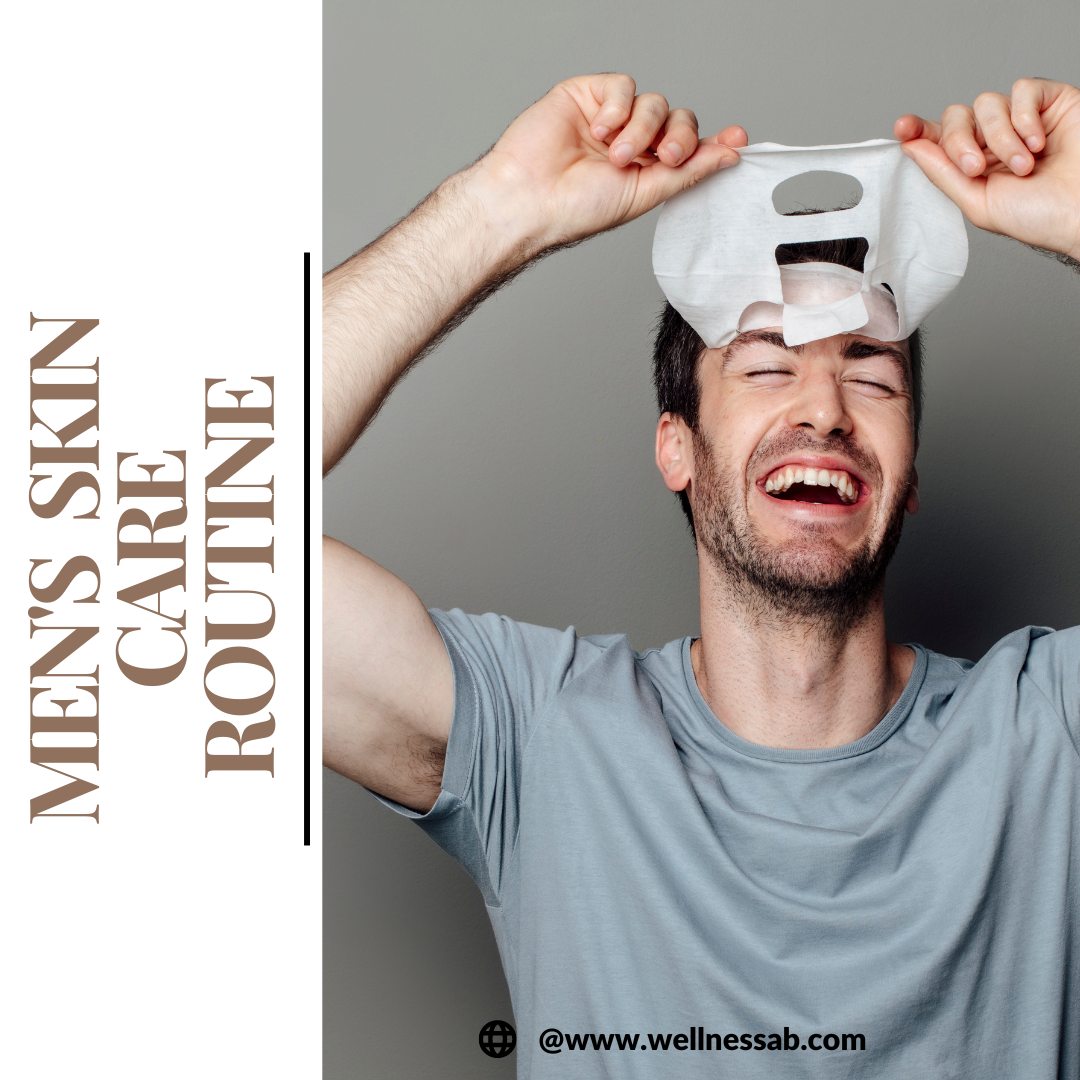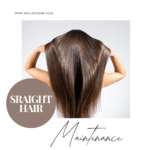
Table of Contents
introduction
Taking care of your skin isn’t just for women—men also need an effective skincare routine to maintain healthy, youthful skin. Men’s skin faces unique challenges due to hormonal differences, exposure to environmental factors, and sometimes, neglect. This guide will provide a step-by-step breakdown of how men can create a practical skincare routine and choose the right products for their skin.
Why Skincare is Essential for Men
Men’s skin is different from women’s, mainly due to the presence of higher testosterone levels. This can result in thicker skin, more oil production, and larger pores, making men more prone to certain skin issues like acne or clogged pores. In addition, men’s grooming habits, such as shaving, can cause irritation or damage if proper care isn’t taken. Thus, having a skincare routine tailored to men’s needs can help combat these issues, leading to healthier and more resilient skin.
Understanding Men’s Skin
Men’s skin, while structurally different from women’s, also varies between individuals. Common skin types include oily, dry, combination, and sensitive. Oily skin, for instance, may require a skincare routine focused on controlling sebum production, while dry skin needs hydration and moisture retention. Understanding your skin type is the first step in building a routine that works for you.
Basic Skincare Routine for Men
For those new to skincare, starting with a basic routine is key. A simple yet effective daily regimen involves cleansing, moisturizing, and exfoliating. Cleanser removes dirt, oil, and impurities, while moisturizer hydrates and nourishes the skin. Exfoliating a few times a week helps remove dead skin cells, making the skin look more refreshed.
Morning Skincare Routine
In the morning, a quick routine includes washing your face with a gentle cleanser, followed by applying a lightweight moisturizer with SPF to protect your skin from sun damage. Sunscreen is crucial in any skincare routine, as it helps prevent premature aging and reduces the risk of skin cancer.
Nighttime Skincare Routine
At night, you can incorporate more nourishing products to help repair the skin while you sleep. After cleansing, use a richer moisturizer or serum containing ingredients like hyaluronic acid or retinol, which helps in skin rejuvenation. Nighttime is also the perfect time to apply treatments for specific skin concerns like acne or pigmentation.
Choosing the Right Products for Men’s Skin
When selecting skincare products, it’s essential to consider your skin type and any specific concerns you may have. For example, if you have sensitive skin, choose fragrance-free and hypoallergenic products. For those with oily skin, lightweight, non-comedogenic products are ideal as they won’t clog pores.
Cleanser Options for Men
Men should opt for cleansers that match their skin type. A foaming cleanser works well for oily skin, while cream-based cleansers are more suitable for dry or sensitive skin. Cleansing twice daily can help remove excess oil and prevent breakouts.
Moisturizers for Men’s Skin
Men’s skin may produce more oil, but that doesn’t mean you should skip the moisturizer. Moisturizers help lock in hydration and balance the skin. Look for oil-free, lightweight moisturizers if you have oily skin, or a richer, more emollient option if your skin is dry.
Common Skin Issues for Men and How to Address Them
Acne, wrinkles, and dark spots are common concerns for men. Acne is often caused by excess oil and clogged pores, which can be managed with a regular cleansing routine and products containing salicylic acid or benzoyl peroxide. Wrinkles and fine lines, on the other hand, can be combated with products rich in antioxidants and retinol.
Here mentioned are some of the ultimate tips for Oily Hair
Anti-Aging Tips for Men
Aging is a natural process, but taking care of your skin can help slow down visible signs of aging, such as wrinkles, fine lines, and sagging skin. Men’s skin, like women’s, is susceptible to the effects of aging, though men may experience it differently due to thicker skin and higher collagen levels. However, men can still benefit from incorporating an anti-aging skincare routine early on. Below are key tips to help men maintain youthful, healthy-looking skin for longer.
1. Start Early with Prevention
The earlier you start caring for your skin, the better. While many men don’t think about anti-aging until they see wrinkles, starting a skincare routine in your 20s or early 30s can prevent the formation of deep lines and other signs of aging. Incorporating daily skincare habits, such as moisturizing and applying sunscreen, can significantly reduce the impact of environmental factors like sun exposure, which accelerates skin aging.
2. Use Sunscreen Daily
One of the most effective anti-aging products is sunscreen. UV radiation from the sun breaks down collagen and elastin in the skin, leading to wrinkles, sunspots, and sagging. Wearing sunscreen with at least SPF 30 every day—rain or shine—helps protect your skin from these damaging effects. Opt for broad-spectrum sunscreens, which protect against both UVA and UVB rays. For men who dislike the heavy feeling of sunscreen, there are lightweight, non-greasy formulas available that are perfect for daily use.
3. Hydrate and Moisturize
Dry skin tends to age faster because it loses its elasticity and is more prone to developing fine lines. Hydrated skin looks plumper, smoother, and more youthful. Use a good moisturizer daily, even if your skin is oily. Look for moisturizers that contain hydrating ingredients like hyaluronic acid, glycerin, or ceramides, which help retain moisture in the skin. For men with oily skin, gel-based moisturizers can provide hydration without the greasy feel.
4. Incorporate Retinol or Retinoids
Retinol, a derivative of vitamin A, is one of the most powerful anti-aging ingredients available. It helps speed up cell turnover, boosts collagen production, and reduces the appearance of fine lines and wrinkles. Retinol can also improve skin texture and tone, making it an ideal product for men looking to prevent or reduce signs of aging. Begin by using retinol at night, a couple of times a week, and gradually increase frequency as your skin adapts. For more potent results, prescription retinoids can be used, though they may require guidance from a dermatologist.
5. Don’t Forget the Eyes
The skin around the eyes is thinner and more prone to developing wrinkles and fine lines, often referred to as crow’s feet. This area is also where dark circles and puffiness tend to appear, giving the face a tired look. Using an eye cream specifically formulated to hydrate and firm the skin around the eyes can help delay these signs of aging. Look for products containing ingredients like caffeine (to reduce puffiness), peptides (to promote collagen production), and vitamin C (to brighten dark circles).
6. Exfoliate Regularly
Exfoliation removes dead skin cells that accumulate on the surface, revealing fresher, younger-looking skin underneath. Regular exfoliation not only helps with cell turnover but also allows other skincare products to penetrate deeper and work more effectively. Men can use chemical exfoliants like alpha-hydroxy acids (AHAs) or beta-hydroxy acids (BHAs) to gently exfoliate without harsh scrubbing, which can irritate the skin. Aim to exfoliate 2-3 times a week for optimal results.
7. Eat an Anti-Aging Diet
What you put into your body has a direct impact on how your skin ages. A diet rich in antioxidants, vitamins, and healthy fats can help support healthy skin from the inside out. Foods like berries, leafy greens, fatty fish, and nuts are packed with nutrients that help fight oxidative stress and inflammation, which contribute to aging. Omega-3 fatty acids, found in fish and flaxseeds, help maintain the skin’s lipid barrier, keeping it hydrated and plump.
8. Stay Hydrated
Drinking plenty of water throughout the day is essential for keeping your skin hydrated and preventing dryness, which can accentuate wrinkles. Proper hydration helps flush out toxins and keeps your skin looking fresh and youthful. Aim to drink at least eight glasses of water daily, and consider limiting dehydrating substances like caffeine and alcohol, which can cause your skin to look dull and tired.
9. Get Enough Sleep
Adequate sleep is often referred to as “beauty sleep” for a reason. When you sleep, your body goes into repair mode, regenerating cells and producing collagen, which is essential for maintaining firm, elastic skin. Lack of sleep can accelerate the aging process, leading to dark circles, puffiness, and an overall dull complexion. Aim for 7-9 hours of quality sleep each night to support your skin’s natural healing processes.
10. Consider Antioxidants in Your Skincare Routine
Antioxidants are powerful ingredients that help neutralize free radicals, which are unstable molecules that damage skin cells and accelerate aging. Vitamin C, vitamin E, and niacinamide are some of the most effective antioxidants for skincare. Products containing these ingredients can brighten skin, reduce hyperpigmentation, and improve overall skin texture. Incorporating a vitamin C serum into your morning routine can help protect your skin from environmental damage and promote a youthful glow.
11. Minimize Stress
Chronic stress can lead to a variety of skin issues, including premature aging. Stress triggers the release of cortisol, a hormone that breaks down collagen, leading to the formation of fine lines and wrinkles. To combat this, incorporate stress-reducing activities into your daily life, such as exercise, meditation, or deep-breathing techniques. Maintaining a balanced lifestyle not only helps you feel better mentally but also keeps your skin looking younger and healthier.
12. Quit Smoking and Limit Alcohol Consumption
Smoking is one of the leading contributors to premature aging. The toxins in cigarette smoke damage collagen and elastin, causing skin to sag and wrinkle over time. Similarly, excessive alcohol consumption can dehydrate the skin, making wrinkles and fine lines more prominent. Quitting smoking and limiting alcohol intake can significantly improve the appearance and health of your skin, helping it to stay firmer and more elastic for longer.
13. Facial Massage and Exercise
Facial massages can help improve blood circulation and stimulate collagen production, keeping the skin firm and radiant. Incorporating facial exercises, also known as face yoga, can help tone the facial muscles and reduce sagging over time. Gentle massage with your fingers or a jade roller can also help improve lymphatic drainage, reducing puffiness and giving your face a more youthful appearance.
Men’s Skincare on a Budget
You don’t have to break the bank to maintain good skin. Affordable drugstore products can be just as effective as luxury brands. Focus on essential products like a good cleanser, moisturizer, and sunscreen. DIY skincare remedies using natural ingredients like aloe vera or honey can also provide additional benefits.
DIY remedies are a fantastic way to care for your skin without spending a lot of money. Here are some budget-friendly skincare treatments specifically for men:
1. Oatmeal and Honey Face Mask
- Ingredients: Oatmeal, honey, and water.
- Benefits: Oatmeal soothes the skin and reduces inflammation, while honey is a natural moisturizer and antibacterial agent.
- How to Use: Mix equal parts oatmeal and honey, add a bit of water to create a paste, and apply it to your face. Leave it on for 10-15 minutes, then rinse off with warm water.
2. Aloe Vera Gel
- Ingredients: Fresh aloe vera leaf or store-bought aloe vera gel.
- Benefits: Aloe vera is excellent for soothing sunburn, hydrating skin, and reducing redness.
- How to Use: Apply aloe vera gel directly to your face as a moisturizer. It’s especially effective after shaving or sun exposure.
3. Sugar and Olive Oil Scrub
- Ingredients: Sugar and olive oil.
- Benefits: This simple scrub exfoliates dead skin cells and nourishes your skin, leaving it smooth and soft.
- How to Use: Mix sugar and olive oil to form a thick paste. Gently massage it onto your face in circular motions, then rinse with warm water.
4. Tea Tree Oil Spot Treatment
- Ingredients: Tea tree oil and water or a carrier oil like coconut oil.
- Benefits: Tea tree oil has powerful antibacterial and anti-inflammatory properties, making it great for treating acne.
- How to Use: Dilute a few drops of tea tree oil with water or a carrier oil and apply it directly to blemishes using a cotton swab.
5. Cucumber and Yogurt Face Mask
- Ingredients: Cucumber and plain yogurt.
- Benefits: Cucumber cools and hydrates the skin, while yogurt contains lactic acid that gently exfoliates.
- How to Use: Blend half a cucumber with two tablespoons of yogurt, apply the mixture to your face, and let it sit for 15-20 minutes before rinsing.
6. Baking Soda Exfoliant
- Ingredients: Baking soda and water.
- Benefits: Baking soda helps to exfoliate dead skin cells and cleanse pores.
- How to Use: Mix a small amount of baking soda with water to create a paste, gently scrub your face with it, and then rinse off.
7. Green Tea Toner
- Ingredients: Green tea and water.
- Benefits: Green tea is rich in antioxidants and helps to tone and refresh the skin.
- How to Use: Brew a cup of green tea, let it cool, and use a cotton pad to apply it to your face as a toner.
These DIY remedies are easy to make at home and can be incorporated into your regular skincare routine, giving you effective results without the high cost of commercial products.
Skincare Tips for Men with Beards
Taking care of the skin under your beard is just as important as maintaining the beard itself. Here are some essential tips to ensure both your skin and beard stay healthy and well-groomed:
1. Cleanse Regularly
The skin under your beard can accumulate oil, sweat, dirt, and dead skin cells, leading to irritation, acne, or even dandruff (sometimes called “beardruff”). It’s essential to clean your beard and the skin beneath it with a gentle cleanser. Opt for a beard wash or mild face wash designed for sensitive skin to avoid stripping the skin’s natural oils.
2. Exfoliate to Prevent Ingrown Hairs
Exfoliation is key to removing dead skin cells and unclogging pores. This helps prevent ingrown hairs, which are common in bearded areas. Use a gentle scrub once or twice a week, focusing on the areas where hair grows to lift dead skin and reduce the likelihood of ingrown hairs.
3. Moisturize the Skin Beneath
Beards can sometimes block moisture from reaching the skin underneath, leaving it dry and irritated. Applying a lightweight moisturizer or beard oil can help hydrate the skin and soften the beard hair. Beard oils, in particular, are formulated to penetrate both the hair and skin, providing deep hydration without clogging pores.
4. Use Beard Oil or Balm
Beard oils and balms are essential for keeping your beard healthy and manageable. Beard oils are made from nourishing ingredients like jojoba oil, argan oil, and vitamin E, which help condition the hair, reduce itchiness, and give your beard a natural shine. Beard balms, on the other hand, contain moisturizing ingredients combined with a light wax, offering more control and shape for thicker or longer beards. Both options help prevent dryness and promote healthier hair growth.
5. Trim and Groom Regularly
Maintaining a well-groomed beard not only makes it look neat but also contributes to healthy skin. Regular trimming helps keep the beard in shape and prevents split ends, which can contribute to irritation. A good quality trimmer or scissors designed for facial hair is essential for precise grooming.
6. Don’t Forget to Condition
Just like the hair on your head, your beard needs conditioning to stay soft and manageable. Use a beard conditioner or a leave-in conditioner after washing to keep your beard from becoming dry and brittle. This also helps reduce irritation on the skin beneath the beard.
7. Brush or Comb Your Beard Daily
Brushing or combing your beard helps distribute natural oils evenly throughout the hair, promoting softness and reducing frizz. It also helps remove dirt and dead skin cells that may be trapped in the beard, keeping the hair clean and tangle-free. Using a boar-bristle brush or a wide-tooth comb specifically designed for beards is ideal for this purpose.
8. Mind Your Diet and Hydration
Healthy skin and hair are often a reflection of good internal health. Make sure you’re eating a balanced diet rich in vitamins and minerals that support hair growth, like biotin, zinc, and omega-3 fatty acids. Staying hydrated is equally important, as it helps maintain moisture levels in both your skin and hair, preventing dryness and flakiness.
9. Beard Maintenance During the Changing Seasons
Just as your skincare routine may change with the seasons, your beard care routine should adjust as well. In colder months, the skin can become drier, so it’s essential to use more hydrating products like thicker beard balms or creams. In warmer months, focus on lighter oils and SPF to protect both your skin and beard from the sun’s harmful effects.
10. Treat Beard Itch and Dandruff
Beard itch is common, especially during the initial stages of growth. If the itch becomes persistent, it’s likely due to dry skin or beard dandruff. To combat this, use a beard oil with soothing ingredients like tea tree oil or eucalyptus, which have anti-inflammatory and antimicrobial properties. These oils help calm the skin and reduce itching while fighting off any potential fungal issues that could cause dandruff.
11. SPF Protection
While beards offer some protection against UV rays, the skin under your beard is still vulnerable to sun damage. Apply a lightweight, non-greasy sunscreen to your beard area to protect the skin from harmful UV rays. Sunscreens in spray or gel form can be easier to apply without weighing down your beard.
Incorporating these tips into your routine will help you maintain not only a well-groomed beard but also healthy, irritation-free skin underneath. Regular care ensures your beard looks its best while preventing common issues like dryness, flakiness, and beard itch.
FAQs about Men’s Skincare
- How often should men exfoliate?
Men should exfoliate 2-3 times a week, depending on their skin type. - Can men use the same products as women?
While many products are unisex, it’s best to use skincare specifically designed for men due to the differences in skin composition. - Do men need different skincare in winter vs. summer?
Yes, winter often requires heavier moisturizers to combat dryness, while summer skincare focuses on sun protection and oil control. - What ingredients should men avoid in skincare?
Men should avoid harsh chemicals like sulfates and parabens, which can irritate the skin. - Is it necessary for men to use toner?
Toner is not essential but can help balance the skin’s pH and minimize pores. - What are the best anti-aging products for men?
Retinol, vitamin C serums, and moisturizers with peptides are excellent for preventing and treating aging signs.











